Year 2 14th June 2021

Traditional tales and shape
Big Talk
This week we would like you to have a look at the picture below and discuss the following ...
- which book do you think this picture is taken from?
- can you use adjectives to describe the setting?
- what kind of character do you think the girl is?
- what do you think will happen next?
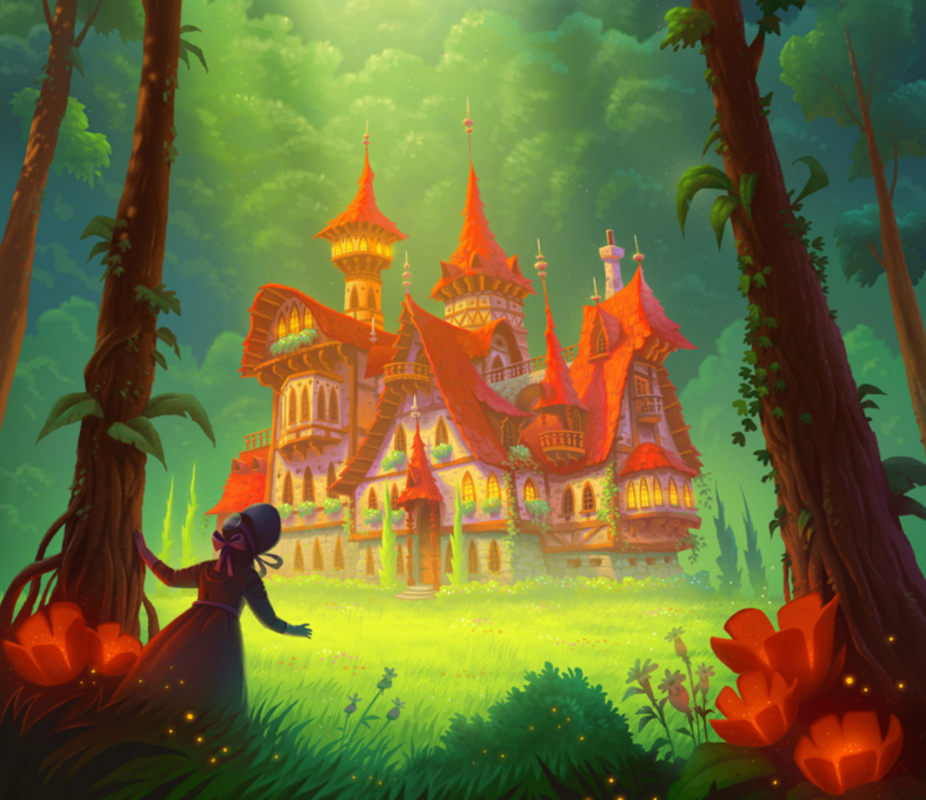
English
In English this week are thinking about traditional tales and fairy. What's your favourite traditional tale? Mrs Ellis has always loved The Little Mermaid by Hans Christian Andersen. We have been comparing different tales thinking about the characters, settings, props, beginning, middle and end. As part of your home learning you could share your favourite tales. Can you think of any other stories with a similar setting or similar character in?
The children will be writing sentences using apostrophes for possession to show which props belong to which characters this week, for example, Cinderella's glass slipper fell off her foot. Have you seen Little Red's coat anywhere?
Maths
This week in maths we are recapping 2D and 3D shape. There are some great videos and resources on the BBC Bitesize page you could have a look at together at home: https://www.bbc.co.uk/bitesize/topics/zjv39j6
Here are the properties of 2D shapes to help when talking about 2D shapes at home...

All three-dimensional (3D) shapes are different but have three primary properties in common. These main properties include:
- Faces: A face is a flat or curved surface on a 3D shape. For example, a cube has six faces, a cylinder has three and a sphere has just one.
- Edges: An edge is where two faces meet. For example, a cube has 12 edges, a cylinder has two and a sphere has none.
- Vertices: A vertex is a corner where edges meet. The plural is vertices. For example, a cube has eight vertices, a cone has one vertex and a sphere has none.
Here are the properties of common 3D shapes...
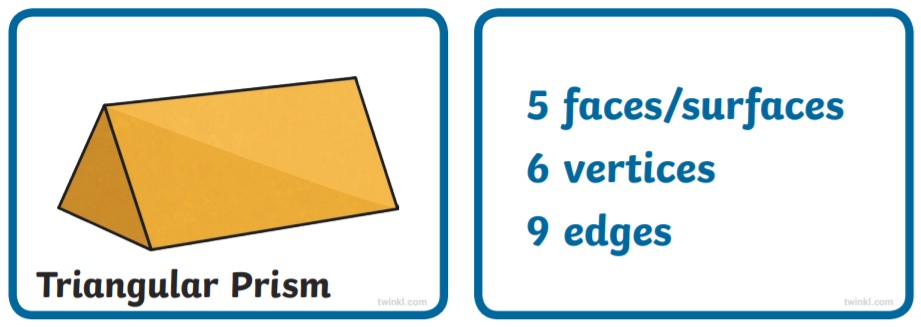


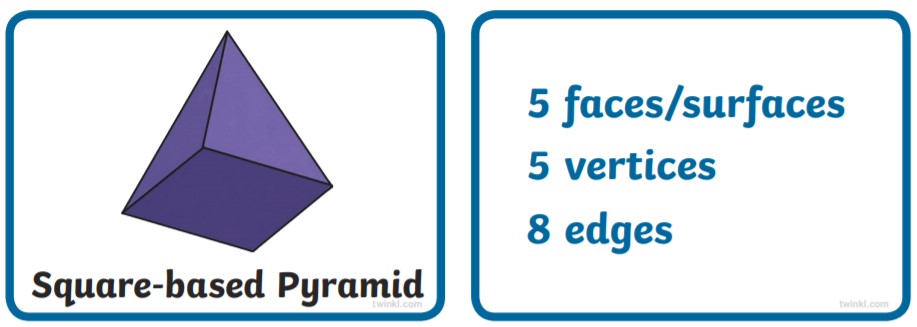
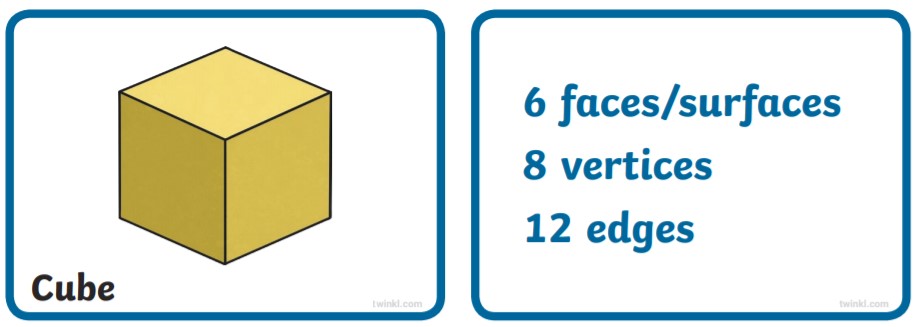
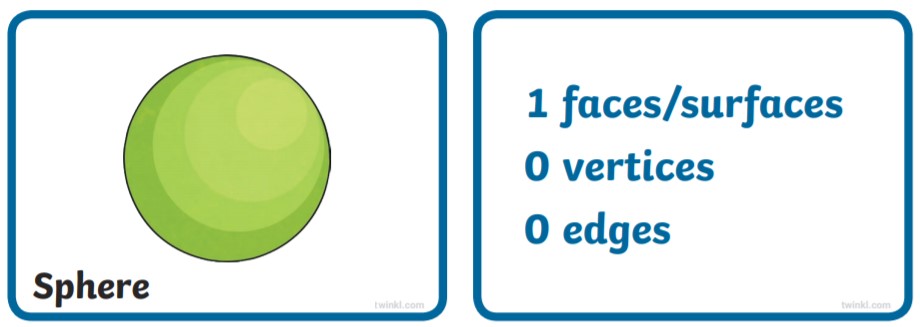
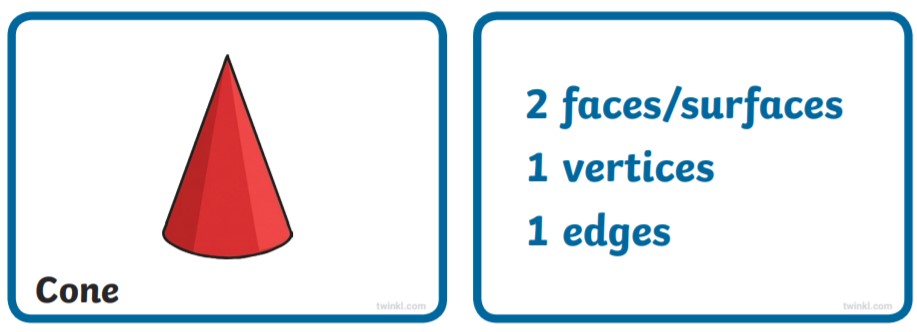
As part of your home learning you could....
- make a picture using 2D shapes and discuss the shapes you've used
- go on a shape hunt and describe the properties of the shapes you see
- make some 3D shapes from toys (such as Lego) or out of play dough
Things to remember...
- Please make sure that children have sun cream on every day as we try to spend as much time outside as possible
- You can use the QR code sent home to look at and order the class photo
- Friday 25th June is non-uniform day
- Children should be reading at least 5 times a week for around 10-15 minutes at a time. This should be a mixture of school books, books from home or the library or other reading materials. It is really useful for children to reread the same books to help with their fluency and understanding.

